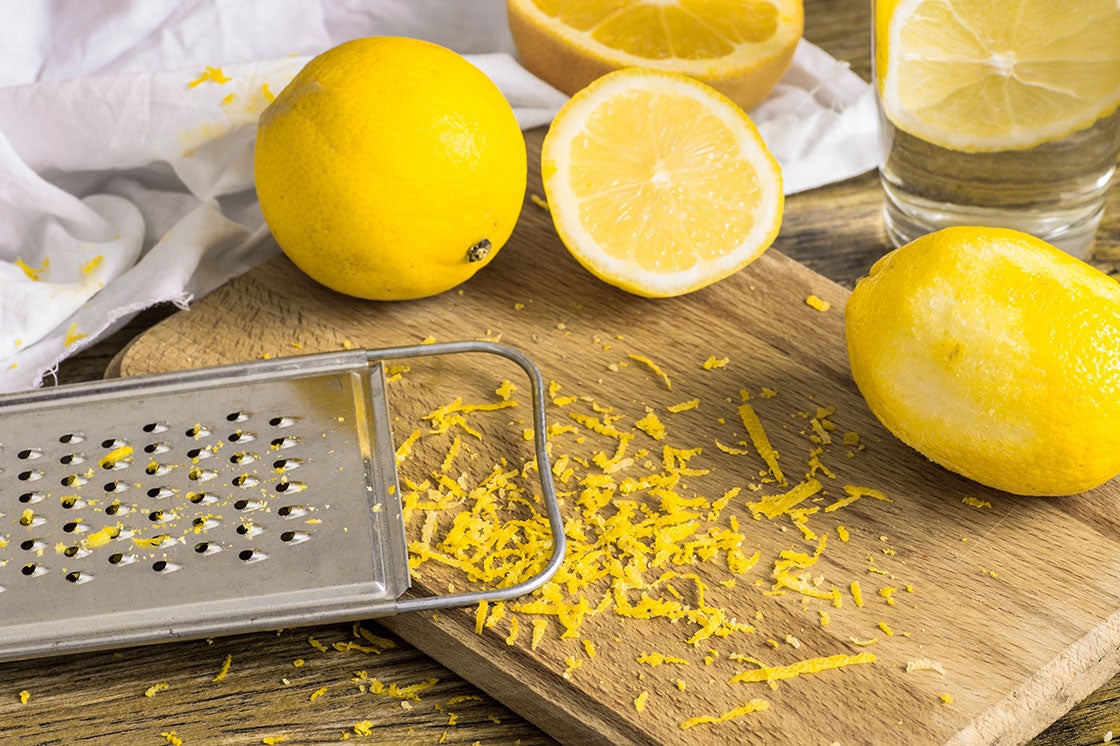What Do I Do With Lemon Zest

I don’t always buy organic, but when it comes to lemons, I make no exceptions. Why? Because there’s a lot more to lemons than their tart, juicy flesh; their aromatic skin is also edible, and an amazing flavor booster in both sweet and savory recipes. Because pesticide residue settles in the skin of fruits and vegetables, it’s a healthy investment to pay a bit more for organic lemons so you can reap all the tasty benefits.
The part of the zest you want to eat is the colorful, topmost layer—not the spongy white pith below. Using a microplane, cheese grater, or mandoline, gently remove that flavorful zest, tap it onto a plate, and allow to air-dry overnight, or until all the moisture has evaporated. Put your dried zest in a glass jar and store in a cool, dry place.
The fine, almost saffron-like tendrils you’ve prepared can be used in myriad, flavor-enhancing ways. Try adding a generous pinch to your morning oatmeal, or to your next batch of chocolate-chip cookies. The bright flavor also enhances the taste of fresh summer veggies; sprinkle over your next green salad, or over a bowl of fresh fruit. (Hint: You can also use lime and orange zest as a seasoning.)
I like to blend a bit of zest with an equal amount of coarse sea salt, and sprinkle the mixture over pasta dishes, or stir it into risotto just before serving. The concentrated citrus flavor marries particularly well with Mediterranean inspired recipes, so try adding a generous pinch to your next pot of minestrone, marinara, or pizza sauce for an experiment in deliciousness.
These recipes from the VT archives call for fresh lemon zest, though dried zest would work, too: